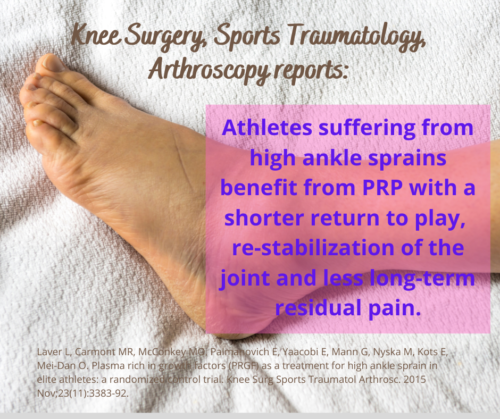
Do you experience recurrent sprained ankles? Is your ankle constantly giving out or overturning? These are common problems for those with instability in their ankle! Frequent swelling, pain, and a decrease in range of motion or possibly an excess of movement are also symptoms of those who experience recurring ankle sprains.
Anything that stretches the ankle further than it is used to can cause an injury to the ankle ligaments. For example, overturning the ankle inwards or outwards can injure the ligaments. Ankle sprains consist of some type of ligament injury. These injuries may be mild, moderate, or severe, but all involve ligament injury and/or tears of the ankle’s ligaments.
If this ligament injury does not fully heal, a cycle of instability begins because the ligament(s) are weakened, allowing for abnormal ankle joint movement. As time progresses, other structures of the unstable ankle joint will also begin to degenerate, resulting in eventual arthritis.
If you look up common treatments for ankle sprains, you will find rest, ice, compression, elevation, anti-inflammatory medications, and bracing or casting. Those with repeat ankle sprains have most likely tried all of these treatments.
Sure, they may provide some relief, but the ankle remains unstable. That is because none of these treatments repair the injured ligaments.
And since 86% of ankle injuries are ligament sprains1, a treatment directed at ligament repair is what is necessary. Yes, treatments like physical therapy to strengthen musculature are helpful, but since muscles also depend on strong tendons and ligaments for proper function and stability, repair of these soft tissue structures will need to be addressed.
At OrthoRegen®, our treatment of choice is Regenerative Orthopedics. The great news is that these non-surgical treatments actually work to repair the ligaments. The treatment is not just a bandaid or a cover-up for the pain. Regenerative therapies, like Prolotherapy, PRP, and Stem Cells, have been shown to repair and regenerate the injured soft tissue structures.
The joint is strengthened by repairing the ligaments and other soft tissue structures, and the instability is resolved. Regenerative Orthopedics is a comprehensive treatment directed at all of the involved structures for the best possible outcome. The result is decreased pain and stiffness and increased function, improving quality of life.2
In cases with more deterioration, PRP or Stem Cells may be recommended in addition to Prolotherapy. Research has shown that these treatments also repair the ankle’s soft tissue and boost function. Even in high ankle sprains, PRP has been shown to return athletes to full activity.
At OrthoRegen®, we have many years of experience in Regenerative therapies and would be happy to help you resolve your recurrent ankle sprains and improve your ankle function. Call us today at (310)453-1234.
1Mulcahey MK, Bernhardson AS, Murphy CP, Chang A, Zajac T, Sanchez G, Sanchez A, Whalen JM, Price MD, Clanton TO, Provencher MT. The Epidemiology of Ankle Injuries Identified at the National Football League Combine, 2009-2015. Orthopaedic journal of sports medicine. 2018 Jul 17;6(7):2325967118786227.
2Hauser RA, Hauser, MA, Cukla J. Dextrose Prolotherapy Injections for Chronic Ankle Pain Practical PAIN MANAGEMENT, January/February 2010 p 70-76.
3Laver L, Carmont MR, McConkey MO, Palmanovich E, Yaacobi E, Mann G, Nyska M, Kots E, Mei-Dan O. Plasma rich in growth factors (PRGF) as a treatment for high ankle sprain in elite athletes: a randomized control trial. Knee Surg Sports Traumatol Arthrosc. 2015 Nov;23(11):3383-92.